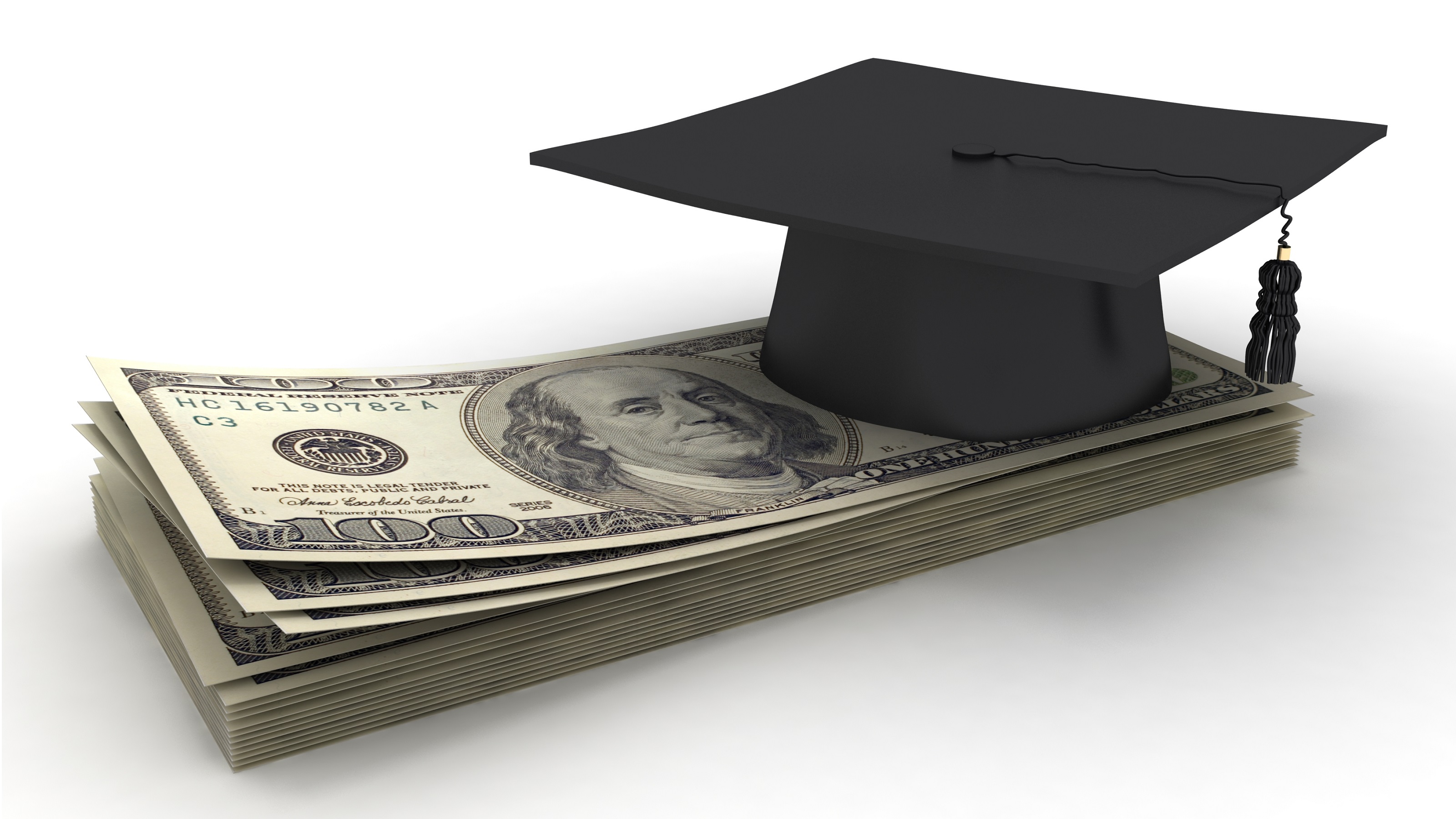What You Should Know About Student Loan Forgiveness Programs
Worried about how much you'll owe Uncle Sam after graduation? Loan forgiveness programs may help.

Two-thirds of students who receive bachelor's degrees leave college with debt in tow. Depending on the amount owed (the average among borrowers is $26,600), it can take decades to pay off the outstanding balance.
See Our Slide Show: 9 Ways to Reduce Your Student Loan Debt
For help with paying down your student loans more aggressively, consider the many programs that reduce your debt in exchange for relocating to specific regions and/or providing needed services in underserved communities. From Kansas to Chad, and in fields from nursing to teaching, there are programs to help graduates slash college debt. But the programs aren’t always easy to get into -- nor easy to stick with. Here are nine things you should know:
1. There are two broad categories of loan-forgiveness programs. You can enroll in the federal government's Public Service Loan Forgiveness program and/or apply for a loan repayment assistance program (LRAP) run by an organization or state. Know the differences: Public Service Loan Forgiveness requires you to make ten years of monthly payments toward your loan via an income-based repayment plan while working in a qualified public-service job before the remaining balance will be canceled or "forgiven." To qualify for one of the income-based repayment plans, you must have high debt relative to your income.
From just $107.88 $24.99 for Kiplinger Personal Finance
Be a smarter, better informed investor.

Sign up for Kiplinger’s Free Newsletters
Profit and prosper with the best of expert advice on investing, taxes, retirement, personal finance and more - straight to your e-mail.
Profit and prosper with the best of expert advice - straight to your e-mail.
An LRAP, in contrast, tends to require dedicated service to a specific organization for a relatively short period of time in exchange for a limited amount of loan forgiveness.
2. You can double-dip. You can join an LRAP such as AmeriCorps or the Peace Corps and receive loan-forgiveness benefits at the end of your program (after one year for AmeriCorps, two for the Peace Corps), and you can count your time as eligible employment toward the ten-year public-service requirement for the federal government's Public Service Loan Forgiveness.
3. Only federal loans are eligible for forgiveness in most of these programs. Few programs allow their money to go toward private loans.
4. You should apply early. Start assessing programs before the beginning of your senior year. Deadlines vary, but Teach for America accepts submissions through February 20, and the rolling application process for AmeriCorps takes about six months. The Peace Corps requires more records and medical clearance, so aim to submit your application seven to 12 months before you hope to start working.
5. It's a big commitment. In most of these programs, you'll spend two years working to serve the greater good -- teaching in Detroit's struggling schools, improving agricultural practices in Senegal or providing mental-health services in rural Minnesota. Some programs, such as AmeriCorps Vista and the Peace Corps, explicitly prohibit you from holding another job while you participate in the program. Usually, you'll have the option to extend your work in the program beyond the two-year term, which tends to reap even more loan-repayment help.
6. Yes, you'll earn a salary. In addition to the partial (or sometimes full) payoff of your loans, most LRAPs provide a small stipend (Teach for America is the highest, with a maximum salary of $51,000) and health benefits.
7. There’s no partial credit. If you don't fulfill the entire commitment, you won't earn any money toward paying off your student loans. You might even face penalties from employers such as the National Institutes of Health research program and Nurse Corps if you breach your contract. In 2010, 12.4% of TFA teachers left the program after the first year.
8. You'll pay taxes on the loan-forgiveness awards. AmeriCorps, for instance, awards a lump sum equal to the largest Pell Grant you could receive ($5,645 in 2013). You won't actually receive a check, but you can make payments toward your loan directly from your profile on the AmeriCorps Web site. You have seven years to apply the award. Any amount you use is considered taxable income that year. For example, a young adult in the 15% tax bracket who applies $5,645 in loan-forgiveness awards toward a loan will trigger $847 in taxes due the following spring.
9. You may not get accepted. Most programs accept only 15% to 30% of their applicants, with Teach for America and the Nurse Corps Scholarship Program taking even fewer candidates. Other programs aren't as restrictive: Kansas's Rural Opportunity Zones relocation program, for example, awards a maximum of $15,000 for living in one of 50 rural counties for five years and simply requests proof of a degree from an accredited college or university and an outstanding student-loan balance.
Profit and prosper with the best of Kiplinger's advice on investing, taxes, retirement, personal finance and much more. Delivered daily. Enter your email in the box and click Sign Me Up.

-
 Are You Prepared to Live Longer? MIT AgeLab Answers Questions
Are You Prepared to Live Longer? MIT AgeLab Answers QuestionsA new measure of longevity readiness indicates that for many Americans, the answer is no — and suggests what is needed to get on track.
-
 NordVPN’s Huge 77% Black Friday Discount Is One of the Top VPN Deals We’ve Seen This Year
NordVPN’s Huge 77% Black Friday Discount Is One of the Top VPN Deals We’ve Seen This YearSave up to 77% on NordVPN with this Black Friday deal, a practical choice for improving online security and streaming access.
-
 New Ways to Use 529 Plans
New Ways to Use 529 PlansTax-free withdrawals from 529 plans could help you sharpen your job skills.
-
 I Want to Help Pay for My Grandkids' College. Should I Make a Lump-Sum 529 Plan Contribution or Spread Funds out Through the Years?
I Want to Help Pay for My Grandkids' College. Should I Make a Lump-Sum 529 Plan Contribution or Spread Funds out Through the Years?We asked a college savings professional and a financial planning expert for their advice.
-
 Amazon Resale: Where Amazon Prime Returns Become Your Online Bargains
Amazon Resale: Where Amazon Prime Returns Become Your Online BargainsFeature Amazon Resale products may have some imperfections, but that often leads to wildly discounted prices.
-
 How Intrafamily Loans Can Bridge the Education Funding Gap
How Intrafamily Loans Can Bridge the Education Funding GapTo avoid triggering federal gift taxes, a family member can lend a student money for education at IRS-set interest rates. Here's what to keep in mind.
-
 How an Irrevocable Trust Could Pay for Education
How an Irrevocable Trust Could Pay for EducationAn education trust can be set up for one person or multiple people, and the trust maker decides how the money should be used and at what age.
-
 UTMA: A Flexible Alternative for Education Expenses and More
UTMA: A Flexible Alternative for Education Expenses and MoreThis custodial account can be used to pay for anything once the beneficiary is considered an adult in their state. There are some considerations, though.
-
 Coverdell Education Savings Accounts: A Deep Dive
Coverdell Education Savings Accounts: A Deep DiveWhile there are some limitations on income and contributions, as well as other restrictions, a Coverdell can be a bit more flexible than a 529 plan.
-
 529 Plans: A Powerful Way to Tackle Rising Education Costs
529 Plans: A Powerful Way to Tackle Rising Education CostsContributions to 529 plans grow tax-free and are not taxed when they are used to pay for qualified educational expenses for the beneficiary.